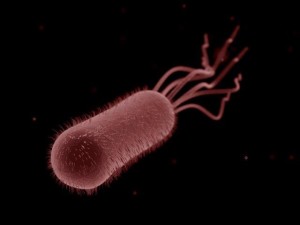
Source: www.acs.org
I read with concern about our PM contracting E.coli. I sincerely hope that he is getting better.
Because depending on which pathotype, E.coli (Escherichia coli) infection could be a nasty thing.
While those living in our intestines are harmless and form part of a healthy intestinal tract, some strains of E. coli are pathogenic whose infection can lead to a range of symptoms from abdominal discomfort, cramps, diarrhoea, to extraintestinal manifestation including (but not limited to) a life-threatening condition known as Haemolytic Uraemic Syndrome or HUS.
TYPES OF E. coli
E. coli consists of a diverse group of bacteria. Pathogenic E. coli strains (the ones that causes symptoms) are categorised into six pathotypes.
- Shiga toxin-producing E. coli (STEC)—is the one commonly heard about in the news in association with food borne outbreaks. While there are many E. Coli strains in this group, healthcare professionals generally divide them into E.coli O157:H7 (or E. Coli O157), and non E.coli O157.
- Enterotoxigenic E. coli (ETEC)
- Enteropathogenic E. coli (EPEC)
- Enteroaggregative E. coli (EAEC)
- Enteroinvasive E. coli (EIEC)
- Diffusely adherent E. coli (DAEC)
This article will focus mainly on the most common form of pathogenic E.coli, which is Shiga-toxin producing E.coli or its common acronym, ‘STEC’.
MODE OF TRANSMISSION & PREVENTION.
It’s faeco-oral, which literally means ‘faeces to the mouth’.
Infection starts when you get human or animal faeces in the mouth. Gross as it sounds, it happens more often than you think especially in areas with inadequate sanitation, limited access to clean water supply, for instance during floods.
Remember your last trip to the loo and what you’ve done to your hands after?
You’d better because the few minutes you take to wash them after completing your business will determine whether or not you will get infected.
While I agree that what you do in there is your business, you must realise that dirty hands are a public hazard especially if you start shaking hands and cooking for other people.
So what can you do?
- Wash your hands thoroughly with soap after using the bathroom, changing diapers, petting animals and touching their living environment (zoos included), and certainly before preparing or eating food. It’s hygiene, hygiene, hygiene.
- Cook your meals and boil water thoroughly no matter how clean and pristine they look. What more if they are not.
- Avoid raw milk, unpasteurised dairy products, and unpasteurised juices.
- Avoid swimming in flood water, which could lead to accidental swallowing of flood water. Having said that, do not drink when swimming or playing in lakes, ponds, streams, swimming pools, and backyard “kiddie” pools. Remember to wash your hands if you come in contact with any public places.
- PREVENT cross contamination in food preparation areas by thoroughly washing hands, counters, cutting boards, and utensils after they touch raw meat.
SYMPTOMS.
The time between ingesting STEC and feeling sick is called the ‘incubation period’ which is between 3-4 days after the exposure. It could however be as short as 1 day or as long as 10 days. Symptoms often begin slowly with mild stomach ache or non-bloody diarrhoea that worsens over several days. Readers should take note that no two individuals are the same but the symptoms listed below are the most common manifestation of STEC infections.
- Severe stomach cramps;
- Diarrhoea (often bloody);
- Loss of appetite;
Most people get better within 5–7 days. Some might experience a minor discomfort while others could face a life-threatening event like Haemolytic Uraemic Syndrome or HUS.
HUS, is a complex multi system disorder characterised by hemolytic anaemia (rupture of red blood cells), thrombocytopenia (reduced platelet count), and acute renal failure. According to one report in the US, 6% of patients develop HUS within 2 – 14 days of diarrhoeal onset occuring mostly in children.
Symptoms of HUS are varied, and include (but not limited to);
- Bruising;
- Low and reduced urine output;
- Looking pale (palor);
- Fine red spots (petechiae);
- Jaundice;
TREATMENT.
The diagnosis is usually done through stool culture, after which the mainstay of treatment is fluid support and hydration. Antibiotics are not required, and some controversial studies have even suggested the risk of developing HUS with STEC infections.
Hospital referrals and admission is warranted for those with dehydration and electrolyte imbalance as they can lead to a condition called ‘hypovolaemia’ (loss of volume) with potential organ damage.
CONCLUSION.
Though some E.coli are part of a healthy intestine, others, as mentioned earlier are not. They can cause great damage to your health and could also threaten your life.
Simple acts of hand washing, hygeinic food preparation could mean a lot to your body. For those living in flood prone areas, do not use flood water to clean your utensils and ensure your children and love ones do not play in them.
Boil your drinking water, and seek medical attention when in doubt.
While it takes another article to write about hygeine, we as a society can do more to avoid food borne diseases. Not only by observing proper hygeine at home, but also pressuring restauranteers to keep their premises clean. A good clue for the general public to know whether or not restaurants practice good food hygeine will be the general condition of their toilets. Inavailability of soap and hand sanitizers is another red flag. It speak volumes when you walk into a dirty toilet without any soap in them.
Steer clear and advise others to do the same. We are, after all, what we eat.
Let us work to keep our love ones and country safe.
Dr. Kamal Amzan is currently practicing Public Health in Sabah, and at the same time a Columnist for The Malay Mail Online. You can reach him on his twitter @drkamalamzan
REFERENCES
http://www.ncbi.nlm.nih.gov/pubmed/12190370
http://cid.oxfordjournals.org/content/early/2012/03/16/cid.cis299.full.pdf+html
http://aem.asm.org/content/66/10/4555.full
http://cid.oxfordjournals.org/content/39/1/1.full
[This article belongs to The Malaysian Medical Gazette. Any republication (online or offline) without written permission from The Malaysian Medical Gazette is prohibited.]
